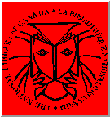| Contents | Previous article | Next article |
![]()
![]()
![]()
| Contents | Previous article | Next article |

December 1995, vol. 27, no. 12
by Roselyn Lilleniit, Acquisitions and Bibliographic Services
From June 1994 to July 1995 staff at the National Library of Canada participated in the Electronic Publications Pilot Project, or, as it became known, E3P (see elsewhere in this issue). The objective of E3P was to identify and to understand issues that the National Library of Can-ada and other libraries could expect to encounter in handling electronic publications and online collections. A small number of formally published Canadian online journals were acquired, con-trolled, catalogued and stored permanently on the Library's VAX VMS server. Public access to these electronic publications was provided though the Internet via the Library's gopher server and the World Wide Web.
The Electronic Collections Committee was given the responsibility of oversee-ing the overall progress of E3P. Three teams were established: the Technical Services Team, the Public Services Team and the Informatics Services Team. Members of the Technical Services (TS) Team came from acquisitions, serials control and cataloguing (descriptive and subject) in the Library's Acquisitions and Bibliographic Services.
The Technical Services Team members received upgrades of their personal computers as well as sound cards and headphones. They learned how to use the Internet and the Windows File Manager, and how to access E3P menus and ma-nipulate the E3P files and programs set up on the VAX VMS server. Overall, participants underwent a great deal of training to accomplish their assigned tasks.
The staff from the acquisitions area searched for appropriate titles on the Internet and set up subscriptions for lists that announced new “e-journals”. When a list of possibilities (eight to 10 e-titles) was drawn up, the next step was to obtain copyright clearance from the publishers of these titles. Although publishers' responses to our requests for permission to include their e-journals were generally positive, this part of the project proved to be quite time-consuming since many questions related to copyright had to be examined by Library personnel, and the details of setting up e-mail subscriptions, file transfer protocol (FTP) accounts, etc. had to be worked out for each individual title.
The TS Team encountered many challenges while acquiring, cataloguing and checking in serials. Some French diacritics did not always display properly; separate header files on issues received via e-mail were confusing to users; the number of links to be established as part of a document with Hyper-Text Markup Language (HTML) had to be decided (eventually, all HTML documents were included on the same Internet domain as the original document); mirroring policies and procedures had to be set up for managing HTML documents, and the technical set-up details had to be agreed upon by Library staff and the publisher/ service provider. Staff also had to contend with numerous problems related to naming and handling files in the VAX VMS environment. Other issues concerned different file formats for the same title, and differing directory and file structures on the Library's file servers and those of the service provider. Some publishers were interested in receiving usage statistics for their e-titles and these could not be provided during the project's timeframe. (They can now be supplied upon request.)
The cataloguers on the TS Team also encountered challenges. Draft descriptive guidelines, based on the Anglo-American Cataloguing Rules, OCLC's “Guidelines for Bibliographic Description of Internet Resources” (1993), and MARBI (Machine-Readable Bibliographic Information) discussion papers, were developed prior to the project's start. Although these guidelines called for the use of the new tag for information about electronic publications, that is, tag 856 and its subfields, this tag was not implemented in the Library's former information system, DOBIS (but it will be implemented in the AMICUS system). Consequently, it was decided to use tag 500, the General Note tag, to store information about electronic publications.
Subject analysis was hampered because it was impossible to scroll through multiple files concurrently. The subject cataloguer assigned up to three Dewey Decimal Classification Numbers to each publication, thus providing expanded subject access to the e-journals mounted on the Web server.
The Serials Control staff checked “issues” of e-publications into the Dynix Serials Control Module, and they also dealt with naming and handling files as well as with the onerous task of following up on issues of e-publications that appeared to be overdue. Following up was particularly difficult when the e-titles were received via FTP or the Web. An automatic mirroring program has now been set up, and, when the serials control staff are able to run this program at will, monitoring will be much easier and less time-consuming.
The knowledge and experience gained by the Technical Services staff who participated in the E3P have been immense. This exposure to the world of e-publications will definitely prove to be very beneficial as the National Library proceeds to establish policies and procedures for building the nation's electronic collections.
At the end of June 1995, 25 titles had been made available on the Web under E3P and 21 titles were “in progress”. In mid-June of 1995, a final report on the work of the Technical Services Team was prepared and submitted to the E3P Project Leader. This report included recommendations for handling e- publications at the Library, and, along with the recommendations received from the other two E3P teams, they will be incorporated into the project's final report, as appropriate. A report on the Electronic Publications Pilot Project will be made available. Watch future issues of National Library News for more information.